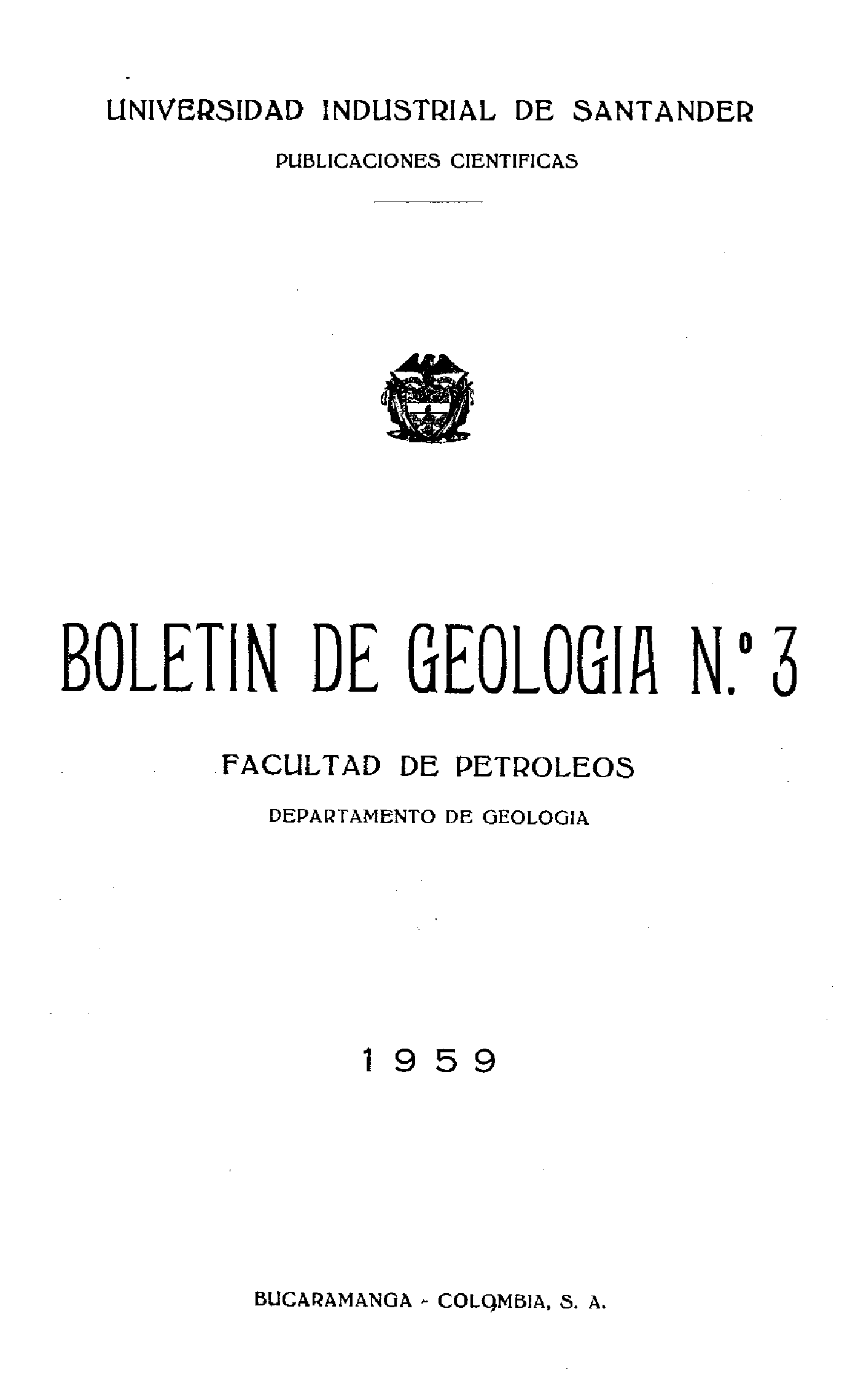Publicado 1959-04-08
Cómo citar
Resumen
RESUMEN
Se estudia en un sector de la vertiente occidental del macizo de Santander, macizo ígneo-matemórfico aparecido por desmantelamiento de un gran pliegue de fondo que hacia el N se ve enmascarado por la aparición de fallas. Sobre este zócalo se reconoce un jura-triásico (formación Girón) con un espesor que dentro del sector estudiado varía de 500 metros en la parte W, hasta llegar a desaparecer hacia el E; esta desaparición se debe, por lo menos en gran parte, a un período de erosión pre-cretácico. El cretácico tiene una potencia de 2.000 metros y su característica más importante es que en los niveles del barremiense al turoniense, ambos inclusive, es fuertemente arenoso lo que constituye un cambio de facies con respecto al cretácico del valle medio del Magdalena, que es poco arenoso y de mayor espesor. Desde el punto de vista estructural el macizo en este sector se limita al W por una importante falla que lo eleva a modo de bloque único. La tectónica andina interna del macizo es una tectónica de fallas que han dejado de jugar con anterioridad a la falla antes citada. Todas estas fallas tienen su labio hundido hacia el E, a pesar de lo cual el zócalo aflora cada vez más en este sentido debido a que todo conjunto está basculado y se eleva hacia el E. Además de esta tectónica de fondo existe una tectónica de cobertera debido a adaptación al zócalo, compresiones locales o a la gravedad. Morfológicamente la nota más destacada es la existencia de una zona arrasada actualmente entre los 3.000 y 3.400 metros; las fallas interiores del macizo son anteriores al arrasamiento, la falla límite es posterior.
ABSTRACT
This is a study of a sector of the West fiank of the Santander Massif an igneous-metamorphic massif uncovered by the stripping of a great, deep-seated fold which to the North is masked by the presence of faults. On this basement a Jura-Trias formation (The Giron) has been identified, the thickness of which varies from 500 m. on the western side to zero to the East where it disappears. This disappearance is due, at least in large parte, to a period of pre-cretaceous erosion. The cretaceous has a thickness of 2.000 m. and its most important characteristic is that the horizons from barremian to the end of turonian age is very sandy. This constitutes a facies change compared with the cretaceous of the middle Magdalena Valley, which is there, is thicker and only slightly sandy. From a structural stand point the massif in this sector is delimited to the W by a major fault which has elevated it as a unit. The internal Andean tectonics of the massif is governed by faulting which had ceased to be active before the formation of the above-mentioned fault. All these internal faults have their down-thrown blocks to the E although the basement rises more and more in that direction due to the fact that the whole complex has been tilted and elevated to the East. Besides this basal tectonic there exist surface structure produced by adaptation to the basement, by local compressive forces or by gravity. Morphologically, the outstanding feature is the existence of an eroded zone at an elevation between 3.000 and 3.400 m. The first faulting of the massif is prior to the erossion, the limiting fault is later.
